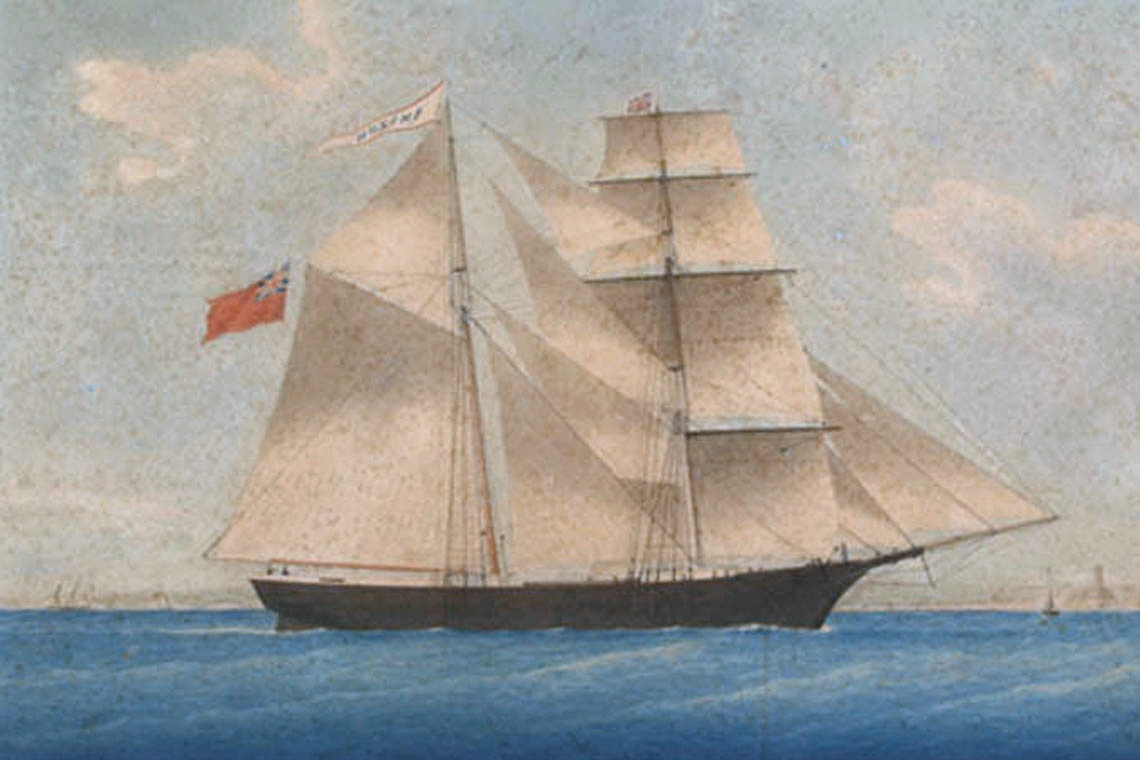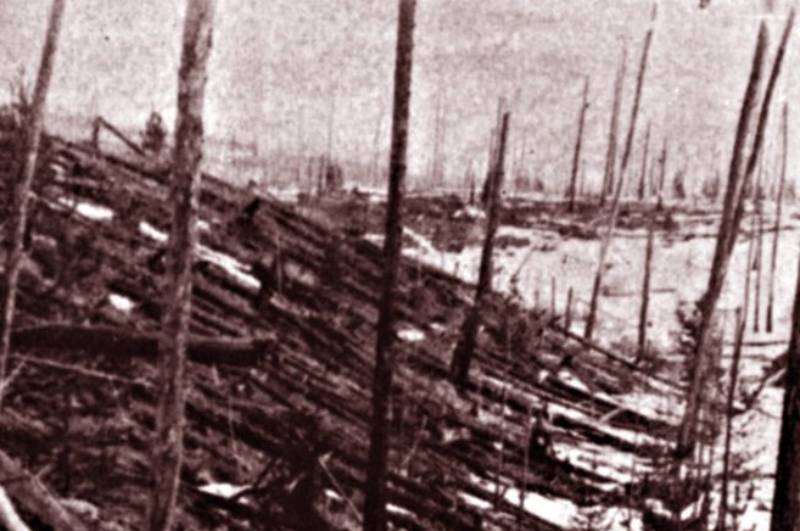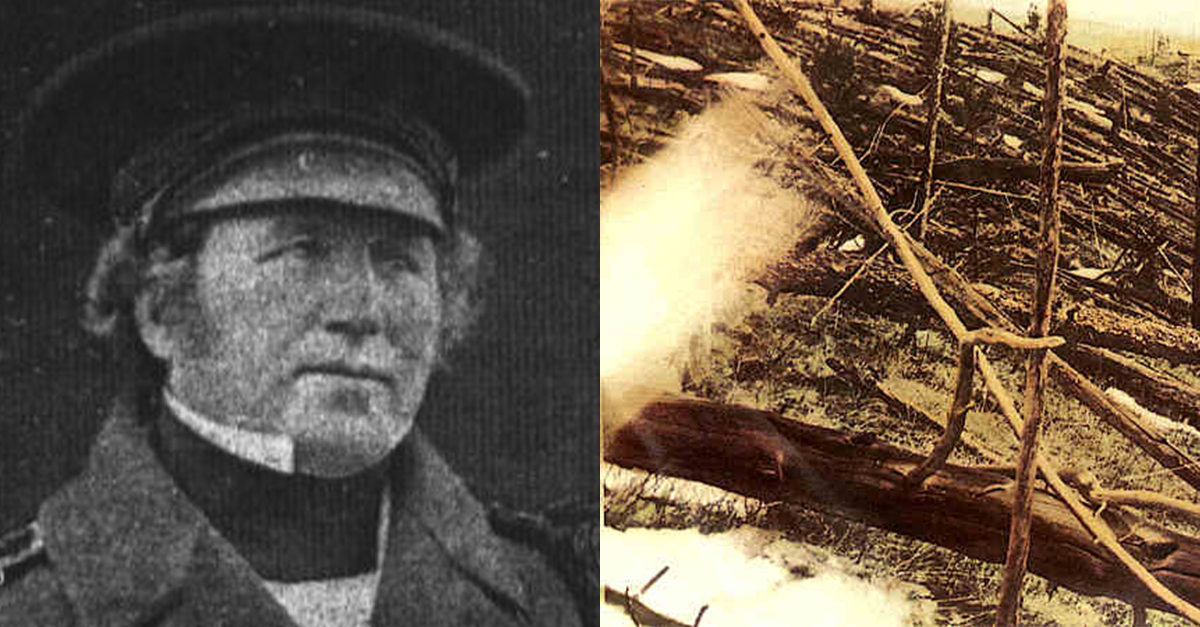Historical Mysteries
Some of the historical mysteries we're about to discover endured for centuries, some even for thousands of years. But (except for one) they all have something in common: Historians have finally solved them.

The Mary Celeste
The Mary Celeste is one of the most haunting ghost ship stories of all time. In 1872, they found the ship, abandoned and floating away, near the Azores. The only thing was, there didn't seem to be any reason for the crew to jump ship.
 Honore Pellegrin (1800–c.1870), Wikimedia Commons
Honore Pellegrin (1800–c.1870), Wikimedia Commons
Perserved In Amber
The scariest thing about the Mary Celeste is what perfect condition she was in when they found her. Most of the crew's personal effects were there, ample food and supplies were still on board, and the vessel remained seaworthy. Someone had even had time to rig up the lifeboat.
But for all that, no one saw any crew member again.
An Invisible Enemy
Historians think they've finally figured out what went wrong on the Mary Celeste.
At the time of its abandonment, the ship had almost 2,000 bottles of denatured alcohol on board. One compelling hypothesis argues that this caught fire in an "invisible explosion" that sent out a wave of flame but nonetheless did no damage to the ship.
 George McCord, Wikimedia Commons
George McCord, Wikimedia Commons
Fleeing For Their Lives
This flashy but ultimately generally harmless explosion had, according to this theory, big consequences.
It would have panicked the crew, and it seemed to unnerve them so much that they hastily abandoned the vessel with almost all its stores on board. After that, they perished attempting to get ashore.
 DE AGOSTINI PICTURE LIBRARY, Getty Images
DE AGOSTINI PICTURE LIBRARY, Getty Images
The Tunguska Event
In 1908 in remote Siberia, a strange phenomenon ripped through the landscape. 830 square miles of Siberian forests were mysteriously felled in seconds. Researchers estimated the force must have been 1,000 times greater than Hiroshima's atomic bomb.
It became known as the "Tunguska Event" after the location it occurred in, and sparked endless theories.
 Leonid Kulik, Wikimedia Commons
Leonid Kulik, Wikimedia Commons
Possible Explanations
To get to the bottom of the mysterious blast, people suggested that things like secret ultra-weapons, aliens, and even time travel caused it.
Others hypothesized a comet landfall, even though there was no impact crater. Well, they were all wrong.
 Universal History Archive, Getty Images
Universal History Archive, Getty Images
A Rare Phenomenon
In the end, modern scientists have come to the conclusion that an "air burst" caused the Tunguska Event. This is when a meteor, traveling through the Earth's atmosphere, explodes in the middle of its descent.
This accounts for both the size of the blast and the lack of an impact crater, and has been supported by computer simulations.
 Universal History Archive, Getty Images
Universal History Archive, Getty Images
Richard III
King Richard III of England is a near-legendary villain in history, due in large part to Shakespeare's portrayal of him as a grasping, hunch-backed ruler.
His historical death, in the middle of the Battle of Bosworth field, was equally dramatic as this fiction. But for a long time the hows and whys of his demise were unknown, especially since his contemporaries never found his body.
 National Portrait Gallery, Wikimedia Commons
National Portrait Gallery, Wikimedia Commons
The Modern Mystery
It took five centuries and tireless research for the full truth of Richard III to come to light. In 2012, the Richard III Society, in concert with the Leicester City Council and the University of Leicester, used historical clues to locate where Richard had been buried in 1485.
 Channel 5 Productions, Britain's Bloody Crown (2016)
Channel 5 Productions, Britain's Bloody Crown (2016)
Grave Discovery
It led them to a humble parking lot on the site where Greyfriars Church once stood, and then to a human skeleton buried hastily in the ground underneath.
 Isananni, CC BY-SA 3.0, Wikimedia Commons
Isananni, CC BY-SA 3.0, Wikimedia Commons
A King Revealed
Later, DNA tests confirmed what the researchers proudly knew in their hearts: The skeleton was Richard III. Forensic evidence also showed much more.
 National Trust, Wikimedia Commons
National Trust, Wikimedia Commons
Forensic Results
After examining the remains, experts determined that Richard had suffered 10 wounds in total, with most of them hitting his head, and one arrowhead even embedding into his spine. There was more.
 BBC, The Hollow Crown (2012– 2016)
BBC, The Hollow Crown (2012– 2016)
A History Of The Body
Amidst more minor cuts and slashes to his skull at the time of death, the bottom of Richard's head showed a massive halberd wound that was certainly mortal.
If that didn't fell him, there was another fatal wound from a blade that went more than 4 inches inside his skull.
 BBC, The Hollow Crown (2012–2016)
BBC, The Hollow Crown (2012–2016)
Final Moments
Because of the intensity of the blows and the lack of any evidence that Richard had been able to defend himself, historians believe the monarch had lost or otherwise removed his helmet during the melee.
After that, he fought for his life against one or many opponents.
 BBC, The Hollow Crown (2012– 2016)
BBC, The Hollow Crown (2012– 2016)
The Real Richard
Richard's remains also gave us insight into what the "real" King Richard III looked like, beyond Shakespeare's famous depiction of him.
For one, he did have severe scoliosis, which could have made one of his shoulders higher than the other. Nonetheless, there was no evidence of a withered arm or a limp, which Shakespeare included.
 BBC, The Hollow Crown (2012–2016)
BBC, The Hollow Crown (2012–2016)


